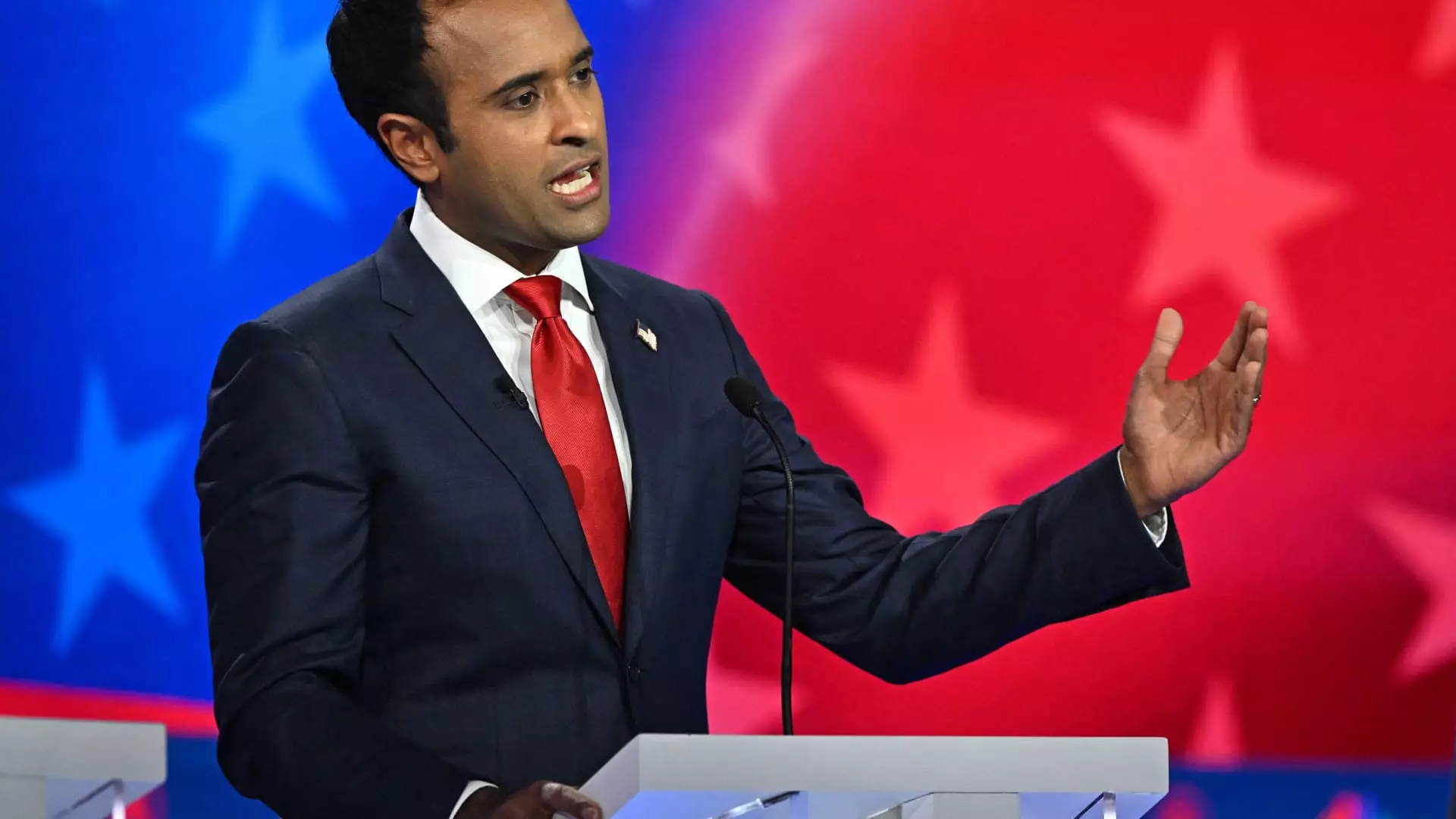Vivek Ramaswamy’s presidential campaign has recently made a significant shift in its advertising strategy, deviating from traditional television ads. The campaign, which had previously allocated a substantial budget for TV advertisements, has now redirected its focus towards alternative methods of communication. This change reflects a deliberate decision to adopt a more targeted approach to connect with voters and convey Ramaswamy’s vision for America.
Historically, Ramaswamy’s campaign had invested heavily in television ads, spending over $200,000 during the first full week of December alone. However, recent data from ad-tracking firm AdImpact indicates a sharp decline in TV ad spending, with only $6,000 allocated towards television ads in the past week. Ramaswamy’s campaign clarified that while they have reduced TV ad spending, they are still actively investing in other advertising methods such as addressable advertising, mailers, text messages, live calls, and door-to-door campaigning.
The campaign’s press secretary, Tricia McLaughlin, explained that this shift in strategy was a deliberate move to be more nimble and hyper-targeted in their advertising efforts. By reallocating their resources and adopting a more multifaceted approach, the campaign aims to reach their identified voters more effectively and mobilize them to participate in caucuses and primaries.
The timing of this strategic shift is noteworthy, as it occurs less than a month before the Jan. 15 Iowa caucuses, the first contest in the GOP presidential nominating process, followed by the Jan. 23 New Hampshire primary. Ramaswamy’s initial plan had set aside a budget of over $10 million for a comprehensive advertising campaign in these crucial states. However, since the campaign’s announcement, the spending on TV, digital, and radio ads has only amounted to $2.2 million.
Meanwhile, Ramaswamy’s competitors within the Republican party, such as former President Donald Trump, former U.N. Ambassador Nikki Haley, Florida Gov. Ron DeSantis, and former New Jersey Gov. Chris Christie, continue to invest in TV ads. In contrast to Ramaswamy’s recent $6,000 expenditure on TV ads, Trump’s campaign spent $1.1 million, followed by Haley with $1 million, DeSantis with $270,000, and Christie with $88,000. Super PACs supporting Ramaswamy’s opponents have also been active in their ad campaigns, further intensifying the competition.
Ramaswamy’s decision to shift away from TV ads may seem unorthodox within the realm of presidential campaigns, but it aligns with the campaign’s broader strategy. The deliberate and intentional restructuring of the advertising budget allows for increased flexibility and adaptability in targeting specific voter demographics. By utilizing methods such as addressable advertising and personalized communication, the campaign aims to deliver its message more effectively to individual voters.
The changing landscape of political advertising has prompted campaigns to think outside the box and explore different avenues to engage with voters. Ramaswamy’s campaign recognizes the importance of this shift and is determined to leverage these alternative methods as a means of connecting with voters on a more personal level.
While Ramaswamy’s campaign continues to chart its course with this new advertising strategy, it remains to be seen how effective it will be in the upcoming primaries. The shift away from TV ads may present both challenges and opportunities for the campaign. However, by prioritizing targeted communication channels, Ramaswamy’s campaign hopes to secure the support of their identified voters and make a lasting impact in the dynamic and ever-changing political landscape.

Leave a Reply